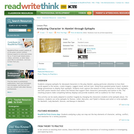
Students create epitaphs for characters from a tragedy, such as "Hamlet".
- Subject:
- English Language Arts
- Material Type:
- Activity/Lab
- Lesson Plan
- Provider:
- ReadWriteThink
- Provider Set:
- ReadWriteThink
- Date Added:
- 09/25/2013

Students create epitaphs for characters from a tragedy, such as "Hamlet".
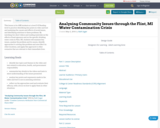
This lesson is for ABE students at a level D-E Reading level to practice identifying key points in video and text and analyzing the causes and effects of social issues, and identifying solutions to these problems. By watching two short videos and reading materials on the effects of lead exposure and on the specific drinking water crisis in Flint, MI, students will examine key issues, analyze the problem and its causes, identify approaches to solving this problem and ones like it in other locations, and apply this approach to other scenarios that are relevant to their immediate lives.

This lesson unit is intended to help teachers assess how well students are able to: work with concepts of congruency and similarity, including identifying corresponding sides and corresponding angles within and between triangles; Identify and understand the significance of a counter-example; Prove, and evaluate proofs in a geometric context.

This lesson introduces students developmental milestones from birth to age 8. Using the CDC’s developmental milestones, students will create timelines highlighting developmental progressions. Students will then synthesize the progressions through observational and reflective writing.

Students are often asked to perform speeches, but rarely do we require students to analyze speeches as carefully as we study works of literature. In this unit, students are required to identify the rhetorical strategies in a famous speech and the specific purpose for each chosen device. They will write an essay about its effectiveness and why it is still famous after all these years.
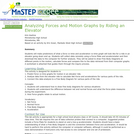
This activity is an indoor lab where students will make predictions of what a force vs time and acceleration vs time graph will look like for a ride in an elevator going down and up. Students will collect data remotely using a Force Plate and accelerometer and then download the data to the computer for further analysis.
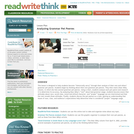
By analyzing Dear Abby's rant about bad grammar usage, students become aware that attitudes about race, social class, moral and ethical character, and "proper" language use are intertwined.
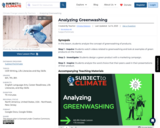
SYNOPSIS: In this lesson, students analyze the concept of greenwashing of products.
SCIENTIST NOTES: This lesson introduces students to greenwashing and then presents Trader Joe’s as a case study. Students are tasked with designing their own green product and an accompanying marketing plan. The lesson informs students how companies can mislead them with products that only seem environmentally friendly and gives tips on how to spot greenwashing. This lesson is recommended for teaching. (The only small issue with this lesson is that an advertisement for a VPN is included in the Trader Joe’s case study video, but that's just part of using resources from YouTube.)
POSITIVES:
-Students create a product and then see what effect their product has on consumers. This will show students how greenwashing occurs within marketing campaigns.
-This lesson includes media literacy components.
ADDITIONAL PREREQUISITES:
-Teachers should be familiar with the term greenwashing and be able to explain what is regulated by the FDA and what is not regulated by the FDA.
-Teachers should understand the term green is not regulated by the FDA, but the term organic is regulated by the FDA.
DIFFERENTIATION:
-The term greenwashing is an abstract concept, so it may be hard for students to grasp. Showing other examples of greenwashing may help students better understand the concept.
-Teachers can show students different labels or advertisements and have students analyze whether they consider each example greenwashing or not.

Images can be a useful component in any subject. This lesson will guide students through an analysis of an image. Students will use critical thinksing skills to interpret an image. Students will then generate a hypothesis about the source and construct questions for further investigation.

The Maryland State Department of Education is working to prevent the misuse and abuse of opioids. This is a student-centered lesson for the 9-12 grade band. This lesson can be modified or remixed to meet the needs of the students you teach. The content of this lesson includes students identifying and analyzing influences that could lead to drug use. Students are then tasked with forming strategies to overcome factors and influences that could lead to drug use.
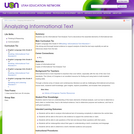
In this lesson students use the Informational Text Analysis Tool to deconstruct the essential elements of informational text. Informational text is more important to teachers than ever before, especially with the rise of the new Core standards. The Library of Congress is an excellent resource for finding and using texts to build students' reading skills.Through a diverse array of classic and contemporary literature as well as challenging informational and primary source texts, students build knowledge, gain insights, explore possibilities, and broaden their perspective.
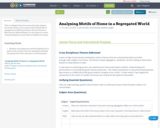
This is an English literature lesson plan that analyzes the motif of home in the context of post World War II segregation in California based on the book Devil in a Blue Dress by Walter Mosley. It is one lesson in a series of interdisciplinary lessons that are detailed in the plan.
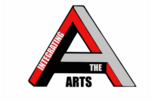
This resource was created by Whittney Carnahan, in collaboration with Dawn DeTurk, Hannah Blomstedt, and Julie Albrecht, as part of ESU2's Integrating the Arts project. This project is a four year initiative focused on integrating arts into the core curriculum through teacher education, practice, and coaching.

Students will examine two paintings and discuss the use of architectural elements and vantage points in the paintings. Referring to the elements of art, students will also examine how three-dimensional shapes are transformed into two-dimensional forms in paintings, as well as the use of indoor space vs. outdoor space.

This resource was created by Braska Grundmayer, in collaboration with Dawn DeTurk, Hannah Blomstedt, and Julie Albrecht, as part of ESU2's Integrating the Arts project. This project is a four year initiative focused on integrating arts into the core curriculum through teacher education, practice, and coaching.
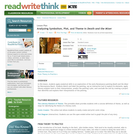
Students apply the analytical skills that they use when reading literature to an exploration of the underlying meaning and symbolism in Hieronymous Bosch's early Renaissance painting "Death and the Miser".
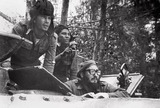
These primary source excerpts are broken into 2 groups: Cuban perspectives and American perspectives of the Bay of Pigs invasion. Consider having students work in pairs or small groups to read, discussion and answer the questions for their perspective. Then have students from both perspectives share observations. Consider using a guided question such as "Why are views so different for the same event, especially of those who fought at the Bay of Pigs?"

Can a person be both admirable and flawed at the same time? In this lesson, students will look more closely at the character of Okonkwo. Students will figure out what his most admirable qualities are, as well as some of his flaws. They will also decide whether Okonkwo has the potential to be a tragic hero.
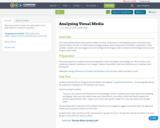
This lesson guides students through analysis of non-print media as a vehicle for argument.
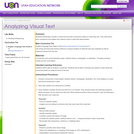
In this lesson Students individually consider a visual text and draw conclusions based on what they see. They write about their conclusions and explain the evidence used to make that determination. Students will be able to analyze a visual text. Students will be able to develop and support a claim about the visual text based on evidence found in the text.